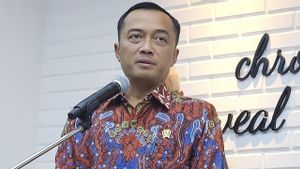JAKARTA - The developer of the new and renewable energy (IPP) private power generation (independent power producer) national energy (EBT), PT Hero Global Investment (HGI) is targeting investment and business development in the green energy sector to 82 MW in the country.
President Director of Hero Global Investment Robin Sunyoto in his statement in Jakarta, quoted by Antara, Saturday, November 2, said that currently, the company has operated two mini-hydro power plants (PLTM) in Manalu Dolok Village, Parmonangan District, North Tapanuli Regency, North Sumatra Province.
HGI through its subsidiary PT Seluma Clean Energy (SCE) manages PLTM Parmonangan-1 with a capacity of 9 MW and through its subsidiary PT Bina Godang Energi (BGE) manages PLTM Parmonangan-2 with a capacity of 10 MW.
The construction process of PLTM Parmonangan-1 began in early 2015 and operated commercial operation date (COD) in July 2017.
Meanwhile, the construction of PLTM Parmonangan-2 starts from 2019 to COD in May 2021.
Robin emphasized that HGI's commitment to developing clean energy aims to support the government in increasing the EBT mix and achieving the net zero emission target by 2060.
For this reason, he said, his party will continue to develop the EBT business by looking for potential locations for the development of clean energy such as water, biomass, biogas, and solar.
"In the future, we will continue to look for potential river flow locations in various parts of Indonesia to be used as PLTM/PLTA and other clean energy sources," said Robin.
Portfolio proyek pipeline EBT yang akan dikembangkan ke depan adalah air 58 MW, biomass 8 MW, biogas 6 MW, dan surya 10 MW atau totalnya 82 MW.
"The key words for PLTM/PLTA IPPs are electricity absorption and readiness of substations as well as distribution transmission because generally PLTM/PLTA are in rural areas," he said.
Based on data from the Ministry of Energy and Mineral Resources, the hydro potential in Indonesia reaches 95 GW, but only 6.7 GW or 7.1 percent has been utilized.
Robin assessed that hydro plants can be an option because they are able to provide competitive cost of production (BPP) per kWh and produce reliable electricity throughout the year.
The minihydro plant he developed, he said, utilizes river sources with a run-off river scheme, thus producing clean energy (electricity) that is beneficial for humans.
The multiplier effect of PLTM
Robin also explained that the existence of two PLTMs had had a positive double effect on the economy of local residents, from the construction process to the operation.
"We are grateful that the existence of these two PLTMs has a positive impact on local residents. This is in line with our enthusiasm, which not only manages water flow to become green energy, but further away from that, HGI wants to provide positive benefits and contributions to residents around the plant," he said.
SEE ALSO:
According to him, during the PLTM construction stage, many local residents were involved by becoming local workers, local suppliers, as well as opening micro and small businesses.
Then, when the generator entered the operating stage, many residents became employees at PLTM. According to Robin, about 70 percent of employees at PLTM Parmonangan-1 and Parmonangan-2 are local residents.
In addition, HGI also carries out corporate social responsibility with a focus on education, agriculture, and improvement of public facilities for local residents.
"We don't want the existence of PLTM just about electricity, but further away from that, beyond electricity, which is the benefit of the economy and local residents," said Robin.
The English, Chinese, Japanese, Arabic, and French versions are automatically generated by the AI. So there may still be inaccuracies in translating, please always see Indonesian as our main language. (system supported by DigitalSiber.id)















